If you want to know how to fix sagging floors in your new or old home, you’re in the right place.
Sagging floors can be a sign something is wrong with your basement, crawl space, or slab foundation. This usually means your foundation is sinking into the soil below, causing your floor joists or concrete slab to sag.
This simple repair guide will teach you what causes sagging floors, how to inspect your foundation to determine the reasoning, and how to fix it.
What Causes Sagging Floors?
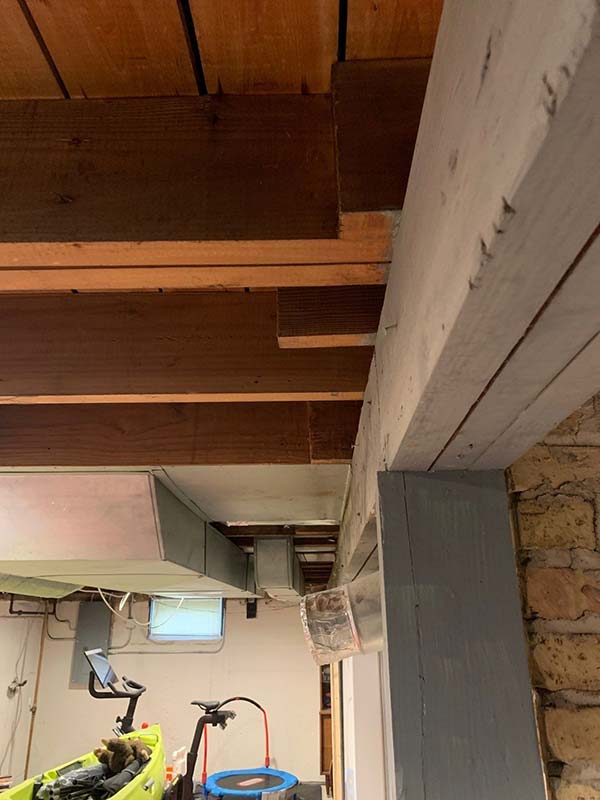
If your basement or crawl space home floors are sagging in the middle, chances are it’s an I-beam issue. If your floors are sagging around the edges of your home, it’s a settling problem.
The same applies to slab foundations, except if your floors are sagging in the middle, you might have a void below your concrete. Each problem comes with its own solution. For joist or I-beam problems, experts can or install steel support jacks.
For settling problems, experts will install push or helical piers to lift those sections of your home. If you have a void below your concrete, a professional will pump an expanding polyurethane foam underneath your slab.
How To Inspect Your Foundation
If you want to know what type of problem your foundation is suffering from, here are a few different tips.
- Inspect your support posts – If you have a basement or crawl space underneath your home and your floor is sagging, experts recommend inspecting your support posts. If your crawl space is supported by wooden posts, check where they meet the floor. Use a screwdriver to poke or push through the wood. If the wood is mushy or rotten, your foundation is losing structural support.
- Inspect your floor joists – Your floor joists are the horizontal beams that run underneath your floors. If these beams are cracked or rotten, that could be the leading cause of your sagging floors. Professionals also recommend making sure that the joists were not cut improperly to install pipes, wiring, or HVAC ducts.
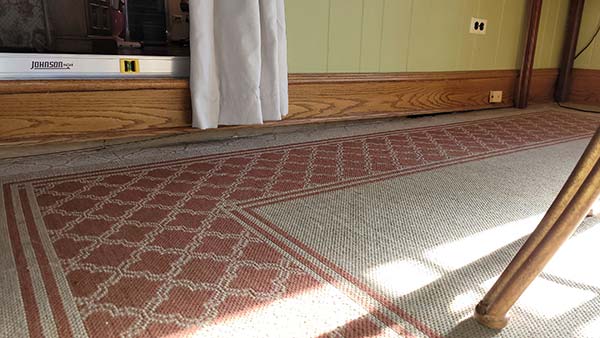
- Inspect your foundation for moisture damage – Look for condensation on your floors and walls. If moisture is building up inside your basement or crawl space, rot could be growing on your wooden joists and beams, which can lead to structural damage. An increase in moisture can also lead to higher utility bills, pests, and worse.
- Inspect your home for signs of settlement – One of the most common signs your foundation is suffering from settlement issues is sticking windows and doors. When your house becomes misaligned, your window and door frames are not going to hold your door or window properly, causing them to stick.
How To Fix Sagging Floors
Here are a few ways foundation repair professionals fix sagging floors broken down by different foundation types and problems.
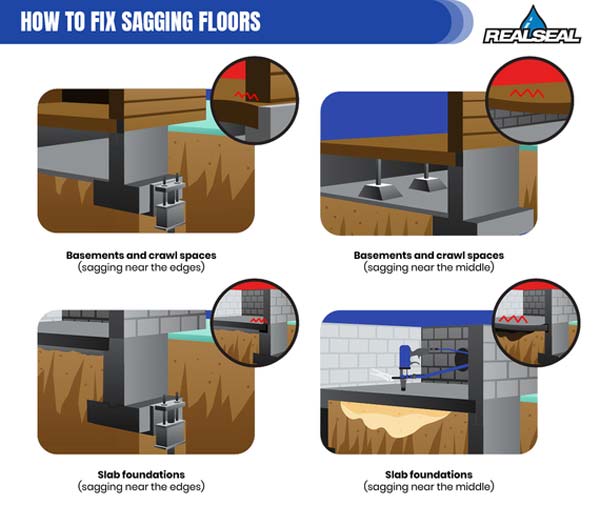
- Basements and crawl spaces (sagging near the edges) – If your floors are sagging near the edges of your basement or crawl space, there could be a settlement problem. In this case, professionals will drill or push long steel piers underneath your foundation to help lift it back to the Maximum Practical Level or the ultimate amount of lift achievable before the movement causes any unnecessary damage. These underpinning methods are able to reach deep below your foundation until they hit load-bearing strata (soil strong enough to hold your foundation).
- Basements and crawl spaces (sagging in the middle) – If your floors are sagging in the middle of your basement or crawl space home, there’s a chance your floor joists or support beams need extra reinforcement or replacement. In this case, professionals install steel jacks under your joists. The jacks are torqued little by little until your beam is lifted back to its original position.
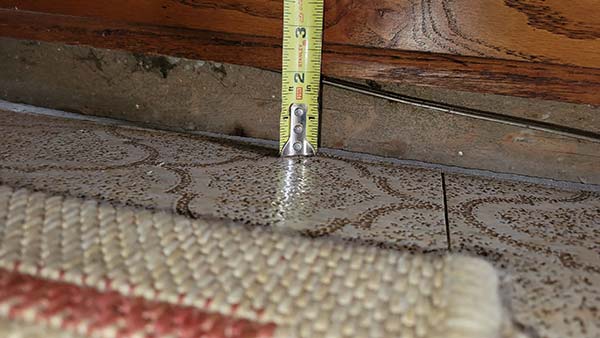
- Slab foundations (sagging near the edges) – If your slab foundation floors are sagging near the edges, chances are your concrete is sinking into the soil below it. In this case, experts use underpinning methods, such as push and helical piers.
- Slab foundations (sagging in the middle) – If your floors are sagging in the middle of your home and you have a slab foundation, there’s a chance a void has developed underneath your concrete. This can happen if water is draining underneath your home, washing away the soil. Voids can also form if tree roots crawl under your slab and die, leaving behind pockets. To correct this problem, experts will drill small holes through your slab and pump an expanding polyurethane foam. This foam will fill the void below your slab and lift it back to its original position.
Will Homeowners Insurance Cover Sagging Floors?
Sagging floors caused by settlement, voids, or improper construction are typically not covered by homeowners insurance. If the damage was caused by something sudden or unexpected, such as a flood or earthquake, you would usually need separate insurance.
Who Can Help Fix Sagging Floors?
If you live in Chicagoland, call The Real Seal. Our trained professionals will inspect your sagging floors and foundation, find out what’s causing the problem, and come up with a permanent solution. We also offer foundation waterproofing, concrete leveling, and more. Call us today for your free inspection and quote.
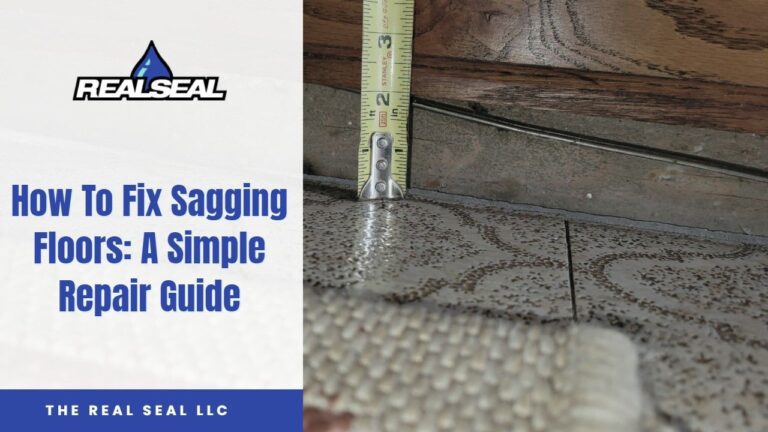
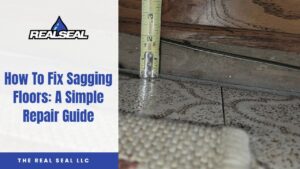





8 Responses
My dad’s kitchen floor was sagging and he put cement blocks in his crawl space and jacked up his kitchen floor. My question is. In the long run is it better to use cement blocks or use house jacks?
Hi Tony, good question!
For a long-lasting and quality repair, you’re going to want to use the house jacks. We would also recommend a proper footing for the jacks. The main issue with sagging beams and sloping floors is not the jacks themselves, but the footing it sits on. You also want to check out the I-Beam to make sure it is not in need of repair itself.
What is the cost to replace subfloors
Hi Jayne,
You would need to speak with a General Contractor in your area to get a quote on that service.
I have a rental house and the floor is sagging in the middle. Would you recommend that it be jacked back up to where it is supposed to be or is it ok to install a drop beam for support so it doesn’t continue to sag? I’m having new cabinets installed as well and also wonder if it will be an issue if it isn’t corrected by jacking it back to its original position.
Hi Debbie!
Great question! It is perfectly ok to support and not lift back up. We actually suggest this, as lifting will cause cracking in drywall/framing, as well as cause doors to become stuck. A lot of times, as floors sag, homeowners will “repair” stuck doors by shaving them down or resetting them. Once you lift the floor back up to where it was, these doors get stuck again. So, most cases it is best to just stabilize and then repair what you need to above.
What would cause the 2nd floor to sag when there is very little sag on the first floor? Don’t see much of anything off in the basement
Hi Jody!
Great question. The truth of the matter is the higher up you go, the more pronounced the symptoms of foundation repair can become.
However, you could be dealing with issues on the 1st and second floor with the carpentry/construction that you are not dealing with in the basement.
Best to get a qualified contractor out to check out the issue.